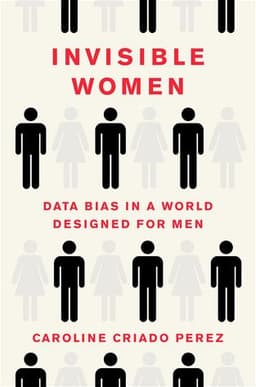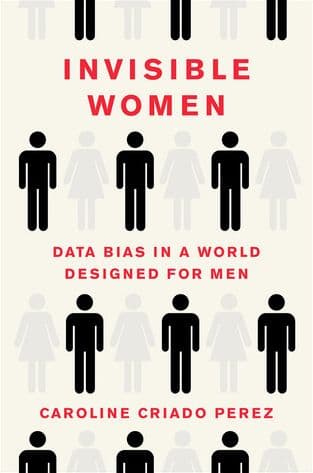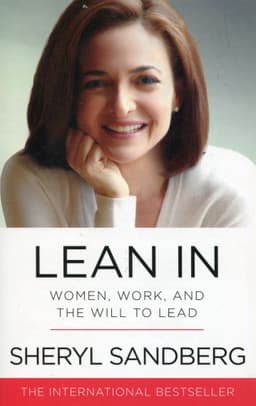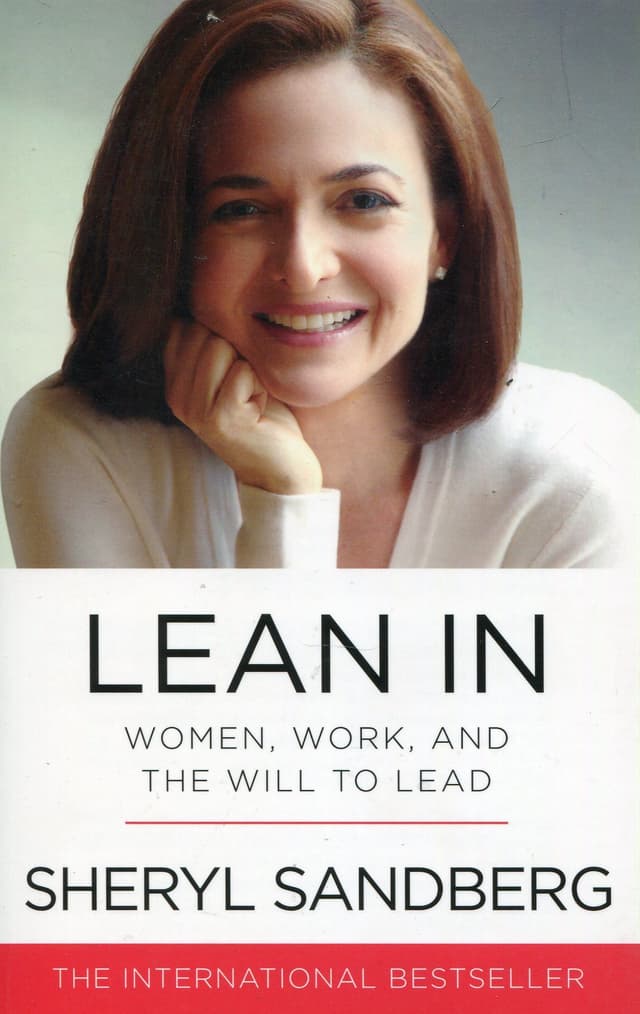
Matrescence Book Summary
On the Metamorphosis of Pregnancy, Childbirth, and Motherhood
Book by Lucy Jones
The Transformation of Matrescence
Matrescence is the process of becoming a mother, a transition as profound as adolescence. It involves dramatic psychological, social, and physical changes, yet remains largely unexplored in medical and cultural conversations.
In pregnancy and early motherhood, a woman experiences neural reorganization, hormonal surges, and identity shifts that fundamentally alter her relationship to herself and the world. Despite being one of the most significant transitions in adult life, matrescence is barely acknowledged, leaving mothers isolated in their experience and vulnerable to mental health challenges.
Section: 1, Chapter: 1
The Myth of Morning Sickness
Despite affecting nearly 70% of pregnant women, pregnancy sickness is still widely misunderstood and misrepresented. The term 'morning sickness' itself is misleading, as nausea and vomiting typically persist throughout the day.
Evolutionary biologists suggest pregnancy sickness serves a protective function for the developing embryo during its most vulnerable stage by:
- Arresting appetite to prevent consumption of potentially harmful substances
- Creating aversions to foods that might contain toxins (meat, eggs, fish, strong-tasting vegetables)
- Providing stronger protection for male fetuses, who appear more vulnerable than females
The persistent mislabeling of this condition contributes to inadequate medical care, research, and social support.
Section: 1, Chapter: 1
The Prenatal Environment Crisis
Pregnant women face an impossible task protecting their babies from environmental toxins. While advised to avoid certain foods containing mercury or chemicals, they have little control over larger environmental exposures.
Microplastics now cross the placenta, making babies 'cyborg' combinations of biological and inorganic entities. Black carbon from vehicle emissions penetrates the placenta, while air pollution exposure correlates with increased miscarriage risk. Women of color and those in lower socioeconomic conditions face even greater environmental health threats.
Yet public health messaging continues to focus primarily on individual maternal behavior rather than corporate or governmental responsibility for these widespread environmental dangers. This individualizing of responsibility masks the systemic nature of the problem while placing the burden on those with the least power to change it.
Section: 1, Chapter: 1
Hidden Metamorphosis: The Cellular Mingling of Mother and Child
During pregnancy, cells are exchanged between mother and fetus via the placenta. When the baby is born, some of those cells remain intact in the mother's body, potentially for decades or forever. This phenomenon is called microchimerism.
Foetal cells have been found in the liver, heart, lung, spleen, intestine, uterus, kidney, lymph nodes, salivary glands, blood, skin, and even the brains of mothers. Scientists believe these cells may have both protective and potentially harmful effects, participating in tissue repair and regeneration while possibly contributing to autoimmune diseases. From the moment of pregnancy, a mother never returns to singular existence.
Section: 1, Chapter: 3
The Invisible Postpartum Mother
In a meta-analysis of pregnancy literature, researchers found that the physical and emotional challenges of the postnatal period were 'minimally acknowledged or simply ignored.' One major pregnancy book dedicated just 0.08% to maternal care after birth, focusing primarily on cosmetic concerns like hair loss and weight loss.
This erasure extends beyond literature into healthcare systems. A 2018 study found that most women leaving hospital after birth were unaware of risk factors for maternal complications, with over 60% not knowing that pregnancy-related problems can occur for up to a year after delivery.
This systematic neglect represents what researchers call 'a form of misogynist oppression' where mothers cannot make sense of their own experiences because the world is presented to them in a deceptive fashion.
Section: 1, Chapter: 3
The Myth of the Natural Birth
Our contemporary obsession with 'natural childbirth' has complex historical roots. In the 1950s, obstetrician Grantly Dick-Read popularized the idea that 'healthy childbirth was never intended by the natural law to be painful.' He claimed fear and anticipation caused childbirth pain, not the physical process itself.
Despite little scientific evidence supporting his claims, Dick-Read's ideas spread worldwide and remain influential in modern birth education. His theories conveniently aligned with patriarchal views that women were 'adapted primarily for reproduction' and religious beliefs that pain in childbirth was morally necessary.
Today, many women feel they've failed if they don't achieve a medication-free birth, despite evidence that pain relief is safe and effective. This ideology often leaves women unprepared for the reality of birth and vulnerable to trauma.
Section: 2, Chapter: 4
Birth Injuries: The Silent Crisis
Between 3-6% of women suffer anal injuries during childbirth, with third or fourth-degree tears extending through the sphincter muscle. These injuries can have lifelong consequences, with over a quarter of women who sustain sphincter injuries experiencing bowel incontinence by age 40, rising to a third by age 60. Nearly half suffer postnatal depression.
Despite these statistics, women are rarely informed about these risks before birth. There remains professional resistance to thoroughly checking for anal sphincter injuries, and many healthcare professionals focus primarily on the baby's wellbeing rather than the mother's long-term pelvic health. This systemic failure to prioritize maternal recovery contributes to unnecessary suffering for countless women.
Section: 2, Chapter: 4
The Censorship of Birth
In 2017, social media platform Instagram regularly removed images of childbirth, categorizing them alongside pornography, threats of violence, and hate speech. When Katie Vigos, founder of Empowered Birth Project, tried sharing photos showing the physical reality of birth, they were repeatedly taken down.
'The female body in the midst of giving birth—blood, pubic hair, buttocks, the image of a baby exiting a woman's vagina—seems to trigger people to report images,' Vigos explained. Women whose birth photos were censored reported feelings of shame, as if they had done something inappropriate.
In 2020, a company created an advertisement showing the reality of postpartum recovery, featuring a woman in mesh underwear caring for her newborn while managing her own physical healing. The Academy Awards rejected it for being 'too graphic,' requesting a 'kinder, more gentle portrayal of postpartum.'
Section: 2, Chapter: 4
Society's Contradictory Messages About Breastfeeding
New mothers face a baffling paradox regarding breastfeeding. On one hand, they're told breastfeeding is essential for their baby's health, with posters declaring 'the gentle art of caring' and 'this mum knows best.' Hospitals pursue 'Baby Friendly' accreditation that prioritizes breastfeeding above all else.
Yet society simultaneously creates barriers that make breastfeeding nearly impossible. Women report feeling embarrassed breastfeeding in public (63%), stigmatized as 'weirdos' or 'hippies,' receiving unwanted sexual attention (one in six), and lacking comfortable spaces in public areas. The sexualization of breasts in Western culture directly conflicts with their biological function.
This contradiction traps women between impossible expectations and inadequate support, contributing significantly to maternal mental distress.
Section: 3, Chapter: 5
The Microbiome of Motherhood
During pregnancy, a woman's microbiome—the ecosystem of bacteria, fungi and other microorganisms living on and within her—undergoes significant changes. This includes shifts in vaginal, gut and skin microbiota, which may impact both physical and mental health.
One mother documented these changes by examining her own bacteria under a microscope, finding new colonies and patterns after childbirth. This biological transformation mirrors the broader theme of matrescence: we are never truly singular beings, but rather complex ecosystems constantly in flux.
These microbial changes reflect our fundamental interconnectedness with the wider living world. As we learn more about how microorganisms influence everything from digestion to mood, the boundary between 'self' and 'environment' becomes increasingly blurred, challenging our notions of individual identity.
Section: 3, Chapter: 5
The Maternal Brain Revolution
Groundbreaking research led by neuroscientist Elseline Hoekzema has revealed that pregnancy induces pronounced, lasting changes to brain structure. Brain scans show significant alterations in multiple regions, particularly areas associated with social cognition and theory of mind - crucial for caregiving and attachment.
Rather than representing deterioration, these changes appear to 'fine-tune' neural connections, making the brain more efficient for parenting by:
- Strengthening responsiveness to the mother's baby
- Enhancing the reward circuit to increase motivation for caregiving
- Reconfiguring the brain's processing of self-identity
The changes are so dramatic that brain scans alone can accurately identify which women have experienced pregnancy. This research confirms that matrescence physically transforms a woman's brain architecture.
Section: 3, Chapter: 6
The Dawn of Maternal Neuroscience
'This is unlike any other brain changes I've investigated before. Something very powerful is reshaping our brains.'
Section: 3, Chapter: 6
The 'Mom Brain' Myth
Contrary to the popular notion of 'mommy brain' as cognitive decline, research reveals that maternal brain changes are adaptive and potentially advantageous:
- Visual memory often improves during motherhood
- Studies show enhanced learning, memory and cognitive plasticity in pregnant women
- Brain connectivity becomes 'more flexible, responsive and efficient'
- Long-term research suggests motherhood may make the brain more resilient
The negative stereotype that motherhood diminishes intellectual capacity has roots in sexist Victorian ideas that women's reproductive capacity stunted their intellectual development. Studies now show that when mothers report memory deficits, it's subjective rather than objective—they perform as well as non-mothers on cognitive tests despite perceiving themselves as impaired.
As neuroscientist Jodi Pawluski writes, 'the idea that motherhood is wrought with memory deficits and is characterized by a brain that no longer functions well is scientifically just not so.'
Section: 3, Chapter: 6
The Evolutionary Mismatch of Modern Motherhood
For most of human evolutionary history, mothers raised children collectively in small social groups where caregiving was shared. Anthropological research by Sarah Blaffer Hrdy shows that women needed help simply to feed a baby—a lone foraging woman couldn't supply the 10-13 million calories a human child needed before independence.
Our contemporary ideal of continuous, exclusive, one-on-one contact between mother and child is evolutionarily unprecedented. Humans evolved as communal caregivers, with alloparents (other carers beyond the biological parents) playing a crucial role.
This mismatch between our evolved biology and modern parenting norms helps explain why new motherhood feels so challenging. Our brains and bodies evolved for collective child-rearing, not the isolated nuclear family model that dominates today's society.
Section: 3, Chapter: 6
The Maternal Brain's Reward System
Research shows that the maternal brain undergoes significant changes in its reward circuitry, particularly in the ventral striatum, where the nucleus accumbens—a core part of the brain's reward system—is found. When mothers view images of their babies, this area lights up with activity.
Animal studies have demonstrated that babies become even more rewarding for mothers than cocaine, creating a powerful neurological drive to care for and nurture offspring. The brain essentially rewires itself to find caregiving increasingly pleasurable and motivating.
This helps explain why mothers can repeatedly get up throughout the night despite extreme fatigue, or why parents often spend their limited leisure time looking at photos of their children. The reward circuitry creates a biological foundation for the profound attachment that develops between mother and child.
Section: 3, Chapter: 6
Maternal Social Isolation
Loneliness affects new mothers at alarming rates, with studies indicating between 28-90% of new mothers experience it. Half of all depressed new mothers believe isolation is the main cause, and around 38% of mothers spend more than eight hours alone each day.
This isolation is historically unprecedented. For millennia, women and children were part of 'actively busy social clusters' with communal work and shared caregiving. Today's mothers face barriers to social connection including shame about perceived inadequacy, fear of judgment, and culturally enforced silence about the challenges of motherhood.
The health implications are severe: loneliness is as damaging as smoking up to fifteen cigarettes daily and significantly increases risk for mental illness. Immigrant, younger, and lower-income mothers face even greater isolation risks.
Section: 3, Chapter: 7
Sleep Deprivation: The Socially Accepted Torture
Sleep deprivation is so dangerous that the Guinness Book of World Records no longer includes attempts to break sleep deprivation records, and governments have stopped using it as a torture technique. Yet new mothers routinely experience prolonged periods of severe sleep restriction.
The impacts are devastating: overactive sympathetic nervous systems, hyperactive response to rewarding experiences with diminished self-control, DNA damage, compromised memory formation, and increased risk of numerous physical and mental health conditions. The US military mandates detainees receive 'four hours of continuous sleep every 24 hours'—more than many mothers get in early parenthood.
Neuroscientist Matthew Walker argues that sleep loss is a neglected factor in psychiatric illnesses. Without adequate REM sleep, mothers cannot process emotional events or make sense of their major life transition.
Section: 3, Chapter: 8
Maternal Mental Illness: Biology Meets Society
Matrescence creates a 'perfect storm' for mental health disorders through a complex interplay of biological and social factors:
- Biological factors: Dramatic hormone fluctuations (some increasing 200-300 times normal levels), followed by rapid withdrawal after birth; inflammatory markers increase; brain plasticity makes mothers more vulnerable to stress
- Environmental factors: Poverty, unsafe neighborhoods, discrimination, childhood trauma, parental stress
- Social factors: Isolation, lack of community support, sleep deprivation, economic pressure
Up to 20% of women develop mental health problems during pregnancy or the first year postpartum, but this figure is likely underreported. The social determinants of health play a crucial role, with Black women and those from disadvantaged backgrounds facing higher risks yet receiving less support.
Section: 3, Chapter: 8
The Missing Maternal Perspective
Maternal subjectivity—the actual lived experience of mothers—has been almost entirely absent from Western philosophy, literature, and culture. In art, mothers typically gaze downward while children look directly at the viewer; the mother is present as a container or prop, not as a subject with her own perspective.
This erasure extends to healthcare and science. The first maternal mental health textbook was only published in 2022. Women's reproductive health remains largely hidden or unknown, with limited research into the real experiences of pregnancy, birth, and motherhood.
As philosopher Siri Hustvedt observes, this absence is not accidental but 'spectacular' in its thoroughness, reflecting our culture's deep discomfort with the maternal experience and its potential to challenge existing power structures.
Section: 4, Chapter: 9
The Truth About Maternal Ambivalence
Maternal ambivalence—the simultaneous experience of love and hate toward one's child—is normal yet remains taboo in our culture. Psychoanalyst Rozsika Parker notes that the 'happiness imperative' around motherhood rules out acknowledging the 'inevitable unhappiness' that comes with it.
Having conflicting feelings is not a sign of maternal failure but rather a hallmark of healthy development. The suppression of these normal feelings can lead to harmful outcomes: unmanageable ambivalence might explode into helplessness and violence, or turn inward as excessive self-sacrifice and martyrdom.
When society allows mothers to acknowledge the full spectrum of their emotional lives, it enables them to integrate their experiences honestly rather than splitting into idealized 'good mother' and demonized 'bad mother' narratives.
Section: 4, Chapter: 9
The Burden of Intensive Motherhood
The ideology of 'intensive motherhood,' which emerged in the late 1980s, places impossible demands on mothers through a set of rigid beliefs:
- Mothering is natural and instinctual to women
- The mother must be the primary caregiver
- She should be a full-time mother and caregiving must be all-absorbing
- Children need copious amounts of her time, energy and resources
- Mothers must be attuned to children's cognitive, psychological, social and emotional needs
- The mother must be ultimately fulfilled by her role
This ideology, prevalent across industrialized nations, correlates with poor maternal mental health, stress, and burnout. It serves to rationalize the status quo of overburdening women with unpaid care work while protecting those who benefit from gender inequality.
Section: 4, Chapter: 10
The Existential Crisis of Matrescence
Becoming a mother triggers a profound existential crisis that goes beyond physical and social changes. The weight of responsibility for another life's survival, combined with a sustained confrontation with mortality, creates a fundamental shift in one's relationship to existence.
As existential psychotherapist Claire Arnold-Baker explains, 'Everything has to be chosen again.' Women must make high-stakes decisions about how to mother, how to incorporate this new identity, and what matters most—all while navigating the 'void of the future' with no clear path forward.
This crisis is intensified by society's failure to acknowledge its significance. Without rituals, community support, or cultural understanding of this transition, women are 'left to overcome this traumatic life crisis, and work things out for themselves, with little or no support.'
Section: 5, Chapter: 11
The Weight of Unsupported Care
'So at the time women are most likely to suffer from mental illness we isolate them inside, expect them to match unrealistic human ideals, judge their every move, demand they get their body back after the violence of birth, silence their lived experience, and expect them to survive on inadequate sleep?'
Section: 5, Chapter: 11
Reproductive Labor: The Hidden Economy
The economic value of motherhood and caregiving remains systematically obscured and devalued. In 2016, the ONS found that unpaid childcare in the UK was worth £351.7 billion, with overall unpaid household service work equivalent to 63.1% of GDP—yet this work remains invisible in economic calculations.
This undervaluation serves a specific purpose: by framing care work as 'natural' satisfaction rather than labor, society can extract this value without compensation. As economist Nancy Folbre notes, this allows both men and employers to 'free ride on voluntary contributions to the production and maintenance of human capital.'
The reality is that this work forms the essential infrastructure propping up capitalism. Without workers, there is no work, making reproductive labor the largest and most necessary section of our economies.
Section: 5, Chapter: 12
The Value of Care Work
'Care work is hardcore. It is life and death work. It is fevers and risk and birth and illness and screaming and love and transference. It is transformation and hope. It is quick thinking and deep patience. It is resentment and anger. It is sacrifice and gift... It took me to the edge of what it means to be human. It tested my empathy to the limit, it challenged me intellectually, it required me to answer and ask questions constantly, to consider metaphysics and the origins of matter.'
Section: 5, Chapter: 12
Capitalism's Incompatibility With Motherhood
Reproduction under late-stage capitalism creates impossible conditions for parents:
- 25% of American mothers return to work within two weeks of giving birth
- Rising housing costs force both parents to work full-time
- Paternity leave remains minimal or nonexistent in many countries
- Mothers face hiring discrimination and lower salaries
- Women's careers are interrupted while men often take extra jobs
- 4.3 million UK children live in poverty, with rates highest among single-parent and minority ethnic families
- Workplaces remain inflexible to caregiving responsibilities
This system prioritizes economic productivity over family wellbeing, creating what researchers call the 'parenting happiness gap'—evidence that parents have lower happiness levels compared to non-parents in industrialized societies, with the largest gap in the United States.
Section: 5, Chapter: 12
The Polarized Views of Working Mothers
New mothers face contradictory societal messages about work and motherhood. Once a woman has children, she feels intense pressure to be self-sacrificing and fully devoted to caregiving, yet simultaneously experiences pressure to maintain her career and professional identity.
Society remains deeply ambivalent about whether and how much a mother should work in her child's early years. Women who work full-time show stress indicators 40% higher than women without children, while those who stay home often face financial penalties and career limitations.
These conflicting expectations leave most mothers caught in an impossible situation: working part-time (putting themselves at economic disadvantage) or experiencing significant stress balancing full-time work with intensive mothering expectations. The 'having it all' myth obscures the reality that without structural changes, this conflict remains unresolvable for most women.
Section: 5, Chapter: 12
The Creative Potential of Motherhood
Despite cultural narratives portraying motherhood as creatively stifling, many women discover renewed creativity through their children's unfiltered engagement with the world. Children's directness, imagination, and freedom from social constraints can inspire adults to reconnect with their own creative impulses.
The constant demand for storytelling, explanation, and play creates new neural pathways and perspectives. As anthropologist Sarah Blaffer Hrdy notes, 'Mothers would have been among the earliest intellectuals... enlisting natural history, myth, and ritual to explain anomalies.'
This creative awakening often comes alongside a reevaluation of priorities and values. Many mothers report finding themselves questioning consumer culture, reconsidering what constitutes 'success,' and developing new appreciation for sensory experiences and present-moment awareness—all of which can fuel artistic and intellectual growth.
Section: 5, Chapter: 12
Matroreform: Motherhood as Resistance
A growing movement views motherhood as a site of potential empowerment and social transformation rather than inevitable oppression. This approach, sometimes called 'matroreform,' encompasses several strategies:
- Establishing community groups like Mothers Talking and Mothers Uncovered that center maternal mental health and experience
- Creating platforms like Parenting Decolonized and Untigering that challenge oppressive, authoritarian parenting models
- Organizing politically through movements like the Marshall Plan for Moms to advocate for structural change
These initiatives share a common thread: recognizing that motherhood can be 'a kind of creative rebellion' that teaches children to challenge harmful systems. As scholar Andrea O'Reilly argues, patriarchy resists empowered mothering 'precisely because it understands its real power to bring about a true and enduring cultural revolution.'
Section: 5, Chapter: 13
Our Collective Maternal Origins
'What kind of world could we imagine and create if, instead of pretending we were thrown into existence, as though by magic, we truly considered our vulnerable, intimate, tactile, entangled, animal origins?'
Section: 5, Chapter: 13
The Permanence of Maternal Change
Recent scientific research confirms that matrescence creates lasting neurological changes. A groundbreaking study showed that pregnancy-induced brain changes remain for at least six years after birth, with researchers able to identify whether a woman had been pregnant by examining brain scans with 91.67% accuracy.
Further research indicates mothers have larger areas of grey matter in their brains for decades, suggesting these alterations may be permanent. Just as adolescence transforms us irrevocably, so too does matrescence create a fundamentally different brain architecture.
These findings challenge our understanding of identity as fixed and unchanging. They suggest that major life transitions like matrescence don't simply add experiences to our existing selves, but rather transform us at a cellular and neurological level into new beings.
Section: 5, Chapter: 13
Related Content


Invisible Women Book Summary
Caroline Criado Perez
Invisible Women exposes the gender data gap that underlies our male-default world, revealing the hidden ways in which the failure to collect data on women's lives leads to bias, discrimination, and disadvantage in everything from healthcare to the workplace to public policy - and offers a roadmap for closing this gap to build a more equitable future for all.
Invisible Women exposes the gender data gap that underlies our male-default world, revealing the hidden ways in which the failure to collect data on women's lives leads to bias, discrimination, and disadvantage in everything from healthcare to the workplace to public policy - and offers a roadmap for closing this gap to build a more equitable future for all.
Society
Feminism
Technology


Lean In Book Summary
Sheryl Sandberg
In Lean In, Sheryl Sandberg examines the barriers women face in achieving leadership roles and offers compelling, research-based advice on what women can do to overcome these obstacles and achieve their full potential in both their professional and personal lives.
In Lean In, Sheryl Sandberg examines the barriers women face in achieving leadership roles and offers compelling, research-based advice on what women can do to overcome these obstacles and achieve their full potential in both their professional and personal lives.
Leadership
Feminism
Business
Biography

